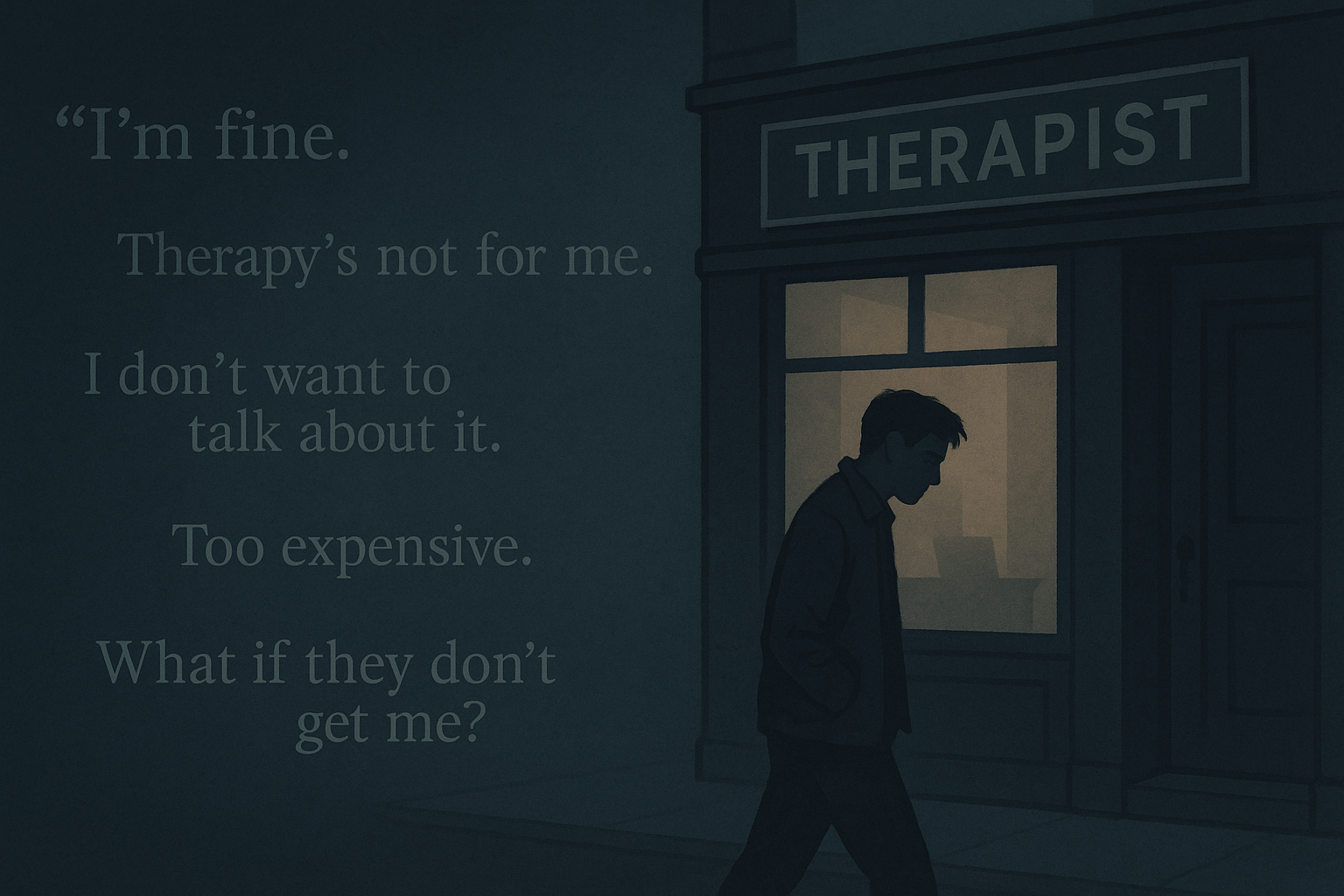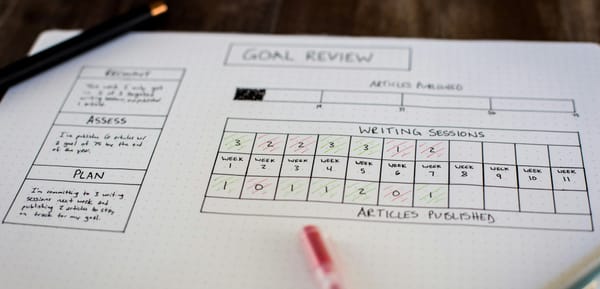Therapy for Skeptics: Why AI Might Be the First Step You’ll Actually Take

Not sold on therapy? You’re not alone. For a lot of people, the idea of talking to a therapist sounds... uncomfortable. Maybe even unnecessary. You’re strong, self-aware, capable, do you really need to sit down and unpack your feelings with a stranger?
That hesitation is more common than you think. Whether it’s the fear of being judged, the belief that therapy is only for people in crisis, or just not wanting to relive old wounds, skepticism around therapy is real. And valid.
But what if there were a way to get support that didn’t involve booking an appointment, explaining yourself out loud, or even being seen? That’s where AI therapy comes in.
It’s not a replacement for human therapists. It’s a gentle on-ramp, a way to explore your thoughts, regulate your emotions, and start healing, without pressure. For many skeptics, AI isn’t the thing that replaces therapy. It’s what finally makes it feel safe enough to try.
Why So Many People Avoid Therapy
Despite growing awareness around mental health, many people still avoid therapy. And not because they’re “fine.” Often, it’s because therapy, as we’ve known it, feels intimidating, unnecessary, or just… not for them.
Here are the most common reasons people resist it:
1. “I’m not broken, I don’t need therapy.”
There’s a persistent myth that therapy is only for people in crisis. In reality, therapy is most effective before things fall apart. But for those who pride themselves on independence or resilience, admitting they need help can feel like weakness, even when they’re struggling inside.
2. Fear of judgment or vulnerability
The idea of sitting in front of someone and opening up about your inner world is scary. What if they don’t understand? What if you say something “wrong”? That fear of being seen or worse, misunderstood keeps many people silent.
3. Cultural or social stigma
In some cultures or communities, therapy is taboo. It can be seen as shameful, indulgent, or even a betrayal of family values. For others, it’s just not something “we do.”
4. Cost, logistics, and access
Let’s face it: therapy can be expensive, hard to access, and time-consuming. Weekly sessions, long waitlists, insurance headaches it’s a lot. And when life is already overwhelming, those extra steps feel impossible.
5. Bad past experiences
Some people have tried therapy and didn’t like it. Maybe the therapist didn’t connect. Maybe it felt too clinical or scripted. A single disappointing experience can confirm every doubt they already had.

What Makes AI Therapy Different
For people who feel uneasy about therapy, AI therapy changes the rules.
There’s no couch. No awkward small talk. No pressure to “go deep” if you’re not ready. Instead, you get something simple: a space to express what’s on your mind, anonymously, on your own time and receive helpful, grounded support in return.
Here’s why it feels easier for so many first-timers:
1. No appointments. No judgment. Just start.
You don’t need to wait for an opening or explain your entire life story. With AI therapy tools like Aitherapy, you can open your phone, type how you're feeling, and get support within seconds. No human watching. No need to “perform.”
2. You're in control. Every step.
You can stop anytime. You can type one sentence or 20. You can ask for a calming technique, a journal prompt, or just vent. AI therapy doesn’t interrupt, and it doesn’t push it gently guides.
3. Low emotional risk, high emotional payoff
Many skeptics worry about being vulnerable. With AI, you can dip your toe in the water. There’s safety in knowing the other side isn’t a person who might misunderstand or judge, it’s a tool designed to support without ego or reaction.
4. Always available, even at 2AM
There’s no “office hours.” Whether it’s a midnight spiral or an anxious lunch break, AI is always there. For people who tend to downplay their struggles during the day but feel them at night, this matters.
Real Healing, Just in a New Form
Let’s be honest AI therapy sounds weird at first. Can a bot really understand how you feel? Can it actually help?
Surprisingly, yes. When it’s designed the right way.
AI therapy isn’t about solving your deepest wounds with a few lines of code. It’s about making mental health support accessible and effective, especially for people who wouldn’t talk to a human therapist. And the healing? It comes not from artificial intelligence acting like a person but from giving you space, tools, and support to process things your way.
Here’s how it works and why it matters:
1. Built on real psychology, not fluff
Aitherapy, for example, is trained in CBT, Cognitive Behavioral Therapy. That’s not some pop psychology trend. CBT is one of the most researched, proven methods for helping people challenge unhelpful thoughts, regulate emotion, and build new habits.
2. It feels more real than you’d expect
Users often describe AI therapy as “surprisingly warm.” That’s because it's designed to recognize emotional patterns, mirror empathy, and guide you through structured exercises. And when you’re in the middle of an anxious spiral, sometimes all you need is:
“It makes sense you’re feeling this way. Let’s take it one step at a time.”
3. It meets you where you are, no shame attached
There’s no diagnosis unless you want one. No pressure to talk about childhood trauma. AI therapy doesn’t ask for a full backstory. It just asks: “What’s on your mind right now?”
Who AI Therapy Can Help the Most
AI therapy isn’t just convenient, it’s uniquely helpful for people who’ve always felt like therapy wasn’t for them. That includes millions who silently carry stress, anxiety, or emotional pain but never feel safe enough to ask for help.
Here are some of the groups finding unexpected relief in AI therapy:
1. Men taught to “man up”
For generations, men have been conditioned to suppress emotion. Vulnerability is often seen as weakness. AI therapy offers an outlet with zero judgment, no eye contact, no performance, no pressure. Just a space to speak honestly without fear of looking “soft.”
2. People from stigmatized communities
In some cultures or family systems, therapy is seen as taboo. Even saying “I’m struggling” can feel like betrayal. AI therapy lets people get help privately, without needing permission, approval, or disclosure.
3. Burnt-out professionals
You’re working 50+ hours a week, juggling meetings, emails, and life. The idea of carving out an hour, driving across town, and emotionally unloading in a chair? Exhausting. AI therapy is therapy on your terms, five minutes between meetings, or a longer chat before bed.
4. People with social anxiety
For those who find real-time conversation draining or stressful, even texting a friend can feel like too much. AI therapy meets you with gentle prompts and patient replies, no small talk, no expectations.
5. First-timers who don’t know where to start
What if you’re not even sure what’s wrong? You just know something’s off. That’s okay. With AI therapy, you can test the waters without commitment. Say a little, see how it feels, then decide if you want to go deeper.
Therapy Without the Therapist: What to Expect
Trying something new always brings uncertainty and AI therapy is no exception. If you’ve never used a mental health app or chatted with an AI therapist before, it’s normal to wonder: What does this actually feel like?
The good news? It’s not weird. It’s not robotic. And it’s not overwhelming.
Here’s what most people experience when they start:
1. You open the app and say what’s on your mind
There’s no script, no right way to begin. You might type:
- “I’m so tired of everything.”
- “I don’t know how to stop overthinking.”
- “I’m not okay but don’t know why.”
That’s enough. You started.
2. The AI responds with empathy and structure
The first reply is often grounding. It doesn’t feel like a machine, it feels like someone who’s listening.
Example:
“That sounds really heavy. I’m here for you. Would you like to talk it through or try a calming exercise together?”
Explore Yourself, It's Free!
3. You guide the conversation
You can vent. You can explore your thoughts. You can ask for advice or strategies like journaling prompts, breathing techniques, or ways to challenge negative self-talk. And if you ever want to stop? Just close the app. No hard feelings.
4. Over time, you build a habit of checking in
Many users start casually and end up checking in daily, just for a quick grounding message, a mood tracker, or a moment to pause. It becomes a quiet, judgment-free ritual that helps build emotional awareness over time.
Does It Really Help? What the Science Says
Skepticism is healthy especially when it comes to something as important as mental health. So let’s talk facts, not fluff.
AI therapy might feel unconventional, but it’s grounded in decades of proven psychological principles. And the results? They’re more promising than many expect.
1. It’s built on Cognitive Behavioral Therapy (CBT)
CBT is one of the most researched and effective therapeutic approaches in the world. It helps people identify unhelpful thought patterns, regulate emotion, and change behaviors. AI therapists like Aitherapy are trained on these techniques — so the guidance you receive is structured, safe, and actionable.
Example:
Instead of just saying “That sucks,” an AI therapist might respond:
“Let’s look at the thought behind that emotion. What are you telling yourself right now? Is it 100% true?”
That’s a CBT skill called thought challenging and it’s incredibly powerful when practiced regularly.
2. Research shows AI tools can reduce symptoms
Recent studies have found that AI-based mental health tools can meaningfully reduce symptoms of anxiety, stress, and even depression especially for people who are not in crisis but need ongoing emotional support.
In fact, for users who engage regularly, the experience often leads to:
- Improved mood awareness
- Better emotional regulation
- Increased self-compassion
3. Therapist-informed design makes it safer
The best AI therapy tools aren’t just built by engineers. They’re designed in collaboration with licensed therapists who review responses, shape language, and guide safety protocols. That means the tone isn’t just empathetic, it’s clinically grounded.
4. Users report feeling “heard” even by a bot
It might sound surprising, but many users say they feel understood, supported, and validated sometimes more than they have in a rushed or mismatched human session.
When to Try It, Even If You Think You Don’t Need It
You don’t have to be in a crisis to try therapy. And you definitely don’t need a diagnosis to benefit from support.
In fact, AI therapy is especially helpful when things feel just a little off. When you’re not in breakdown mode but you know something’s been building.
Here are a few signs it might be time to give it a try:
1. You’re overwhelmed but can’t explain why
You’re functioning, going to work, answering messages, but under the surface, you’re exhausted. Maybe irritable. Maybe numb. That’s not “nothing.” That’s a sign you need space to breathe and reflect.
2. You find yourself googling “Am I okay?” at 2AM
We all do it. But search results can’t validate your emotions or guide you through them. AI therapy can. Sometimes all it takes is one grounding message to feel human again.
3. You’ve been “meaning to try therapy” for months (or years)
You keep saying you’ll look into it. You save a few Instagram posts. You recommend therapy to others but never go yourself. AI therapy can be your no-pressure first step.
4. You just need someone (or something) to talk to
Even if you don’t want advice or deep work, just getting your thoughts out helps. You can vent. You can reflect. You can pause and let a calm, compassionate voice remind you: you’re allowed to feel this way.
No Pressure, Just Support
Skepticism is healthy. It means you think critically. You don’t just jump into trends. And when it comes to something as personal as mental health, that caution makes sense.
But here’s the quiet truth:
You don’t have to believe in therapy to benefit from it.
You don’t have to unpack your trauma or share your life story.
You don’t even have to tell anyone you’re doing it.
You can just… try.
AI therapy offers a low-pressure, judgment-free space to explore how you’re feeling even if you don’t know how to say it yet. And for many people, that’s not a compromise. It’s the beginning of real healing.
If you’ve been holding back because therapy felt too intense, too expensive, too exposed, this is your moment.
No labels. No appointments. No expectations.
Just support, when and how you need it.





